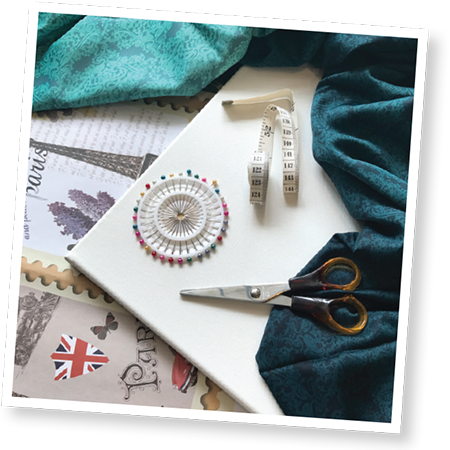
One of journaling’s many uses is as a tool for planning and organizing the various aspects that make up your life. It is a process that becomes meaningful when given a purpose. My mother always told me that in order to remember or track anything, I had to write it down. It worked for my studies in school, for my budgeting in university and every other task I set out to complete. Checklists, notebooks and annual planners became my dependable (albeit limited) personal assistants; prompting me, making sure my time was well-spent and most importantly, giving my mind the freedom to tackle each task with more focus and my heart the peace to enjoy the little things.
There are times, however, when even the most organized person bites off more than they can chew and overwhelm sets in. It is then necessary to take a step back, review the past few months in your journal and evaluate the goals you’ve set for yourself – in relationships, work, your studies, finance, health and fitness.
Vision boards are where you prioritize your goals. It is a space where you can redirect or refine the course of your actions. There are usually a million things we want to do, to complete or to experience and this is where you narrow your goals down to the ones that are the most meaningful. The goals you decide to focus on set the tone for what ultimately go into the action boards.
Create Your Vision Board
STEP 1: Identify your most important goals
Choose a time when you can get a few hours to complete your vision board in a quiet and comfortable location. This should be a place where you can relax, unwind and immerse yourself in your thoughts, with enough space to cut out your images and arrange them onto your board. Remember to have your journal with you. Take some time to go through it, reflect on the past months and list down the goals you want to focus on within the next six to twelve months. Make them specific and attainable and not too far-fetched that putting in the work will yield results that continue to motivate you to while closing the gap.
STEP 2: Select relevant images from your favorite magazines, Pinterest or personal collection
It is undeniable that visualization plays a key role in the actualization of goals. It has long been touted as one of the most powerful mind exercises you can do. By having your goals set out in clear view, you guide your mind to concentrate on the ones you expressly want to realize. The most effective vision boards should display not only images of the things you want, but also those depicting how you want to feel once those said goals have been attained. The more your board reflects how you want to feel, the more it will come to life and usher you in the right direction.
If one of your goals is to spend more time with your family, you can retrieve photos of your family members in a happy setting, enjoying each other’s company. If you are looking to complete a marathon, select images of people rejoicing in the fact they’ve just crossed the finish line. Whatever your goals may be, pick the images that remind you of why you made that goal a priority in the first place.
STEP 3: Map out your images on your board
 Once you have all your photos and images cut out and prepared, it is time to map them out onto your board. As with journaling, how you go about arranging the goals on your board is entirely up to you. Let your vision guide you in deciding which images belong and which don’t. You can use anything as the backing of your boards. Some examples use a poster board or corkboard adhered to the wall, while others simply fill a frame or small canvas and hang it up.
Once you have all your photos and images cut out and prepared, it is time to map them out onto your board. As with journaling, how you go about arranging the goals on your board is entirely up to you. Let your vision guide you in deciding which images belong and which don’t. You can use anything as the backing of your boards. Some examples use a poster board or corkboard adhered to the wall, while others simply fill a frame or small canvas and hang it up.
Use definitive words to describe your goals. Phrases such as “Climb Mount Kinabalu”, “Write a book” or “Win the regional chess tournament” make the goals you place on your board all the more distinct and actionable. Write them out on little cards and place them next to their corresponding images. Finally, don’t forget to incorporate your own picture amidst all those goals as a way of visualizing yourself being surrounded by all the things you have accomplished.
Action Boards, on the other hand, set out small, doable, positive changes you can make to achieve the larger goals of the vision board. Reviewed on a weekly basis, they provide the platform for detailing the steps, notes and ideas required to reach those goals. These should be organic and allowed to evolve as you go. Give yourself the flexibility to edit the boards as you become more informed of the processes involved. As long as the bigger picture stays the same, you can modify the route you take to get there.
For this reason, whiteboards, magnetic boards and canvases work really well. If you prefer a board with more visual appeal, you can cover up some canvases with pretty cotton fabrics stapled around the back and you have yourself a customizable board that matches your room decor. Magnets and push pins make reorganizing your action boards a breeze and you won’t end up with a truckload of boards taking up precious storage space over time.
Create Your Action Board
STEP 1: Take a good look at your vision board
What actions can you take to move closer towards those goals? Take some time to brainstorm and list down your plans of execution. Most goals demand some extent of multitasking and the action boards ensure you don’t overlook any crucial steps in the process.
STEP 2: Fill in your action board
Now that you’ve determined what you need to do, you can fill in your action board. Sift through your idea or bullet journals and attach small lists and notes pertinent to your plan. Putting all the information in front of you will give you more clarity on how best to proceed.
STEP 3: Keep It Visible
As the old adage goes, “Out of sight, out of mind.” Have your vision and action boards out in the open and clearly accessible to you. Look at them often as they now function as constant visual reminders of what your precious time should be spent on. I have my action board up on the wall in front of my desk and it has many a time prevented my attention from going all monkey-minded and losing focus.
STEP 4: Review and update on schedule
Action boards are only as effective as the last review. Make it a point to reevaluate your actions on a weekly basis, identify what worked, what didn’t and what needs modification. Was an action too general? Be more specific. Remove completed tasks and add new ones. Update regularly and you create real momentum towards actualizing your goals.
While vision boards have the ability to inspire and motivate, action boards bridge the gap of where you are now and where you envision yourself to be in the future. Employed together with your bullet journal or planner for daily organization and you have all the tools you need to make your goals a reality. Good luck!
“Vision is merely a dream without action.” ~ Joel Barker
www.instagram.com/artsunami
www.facebook.com/artsunami

























